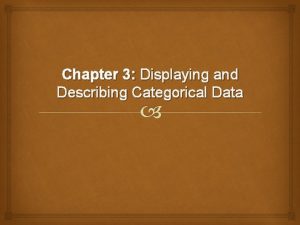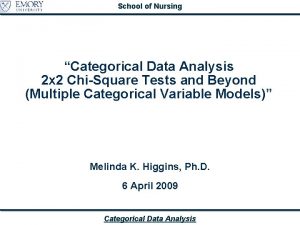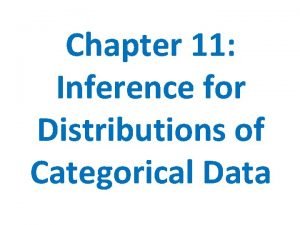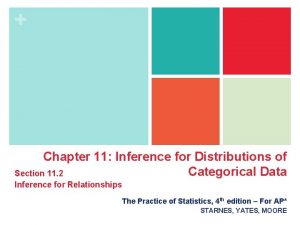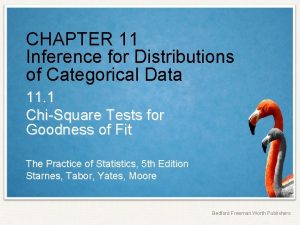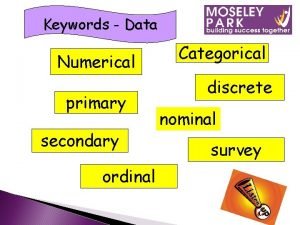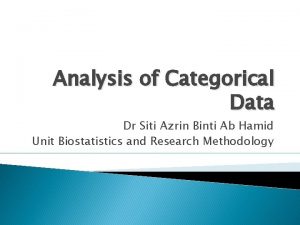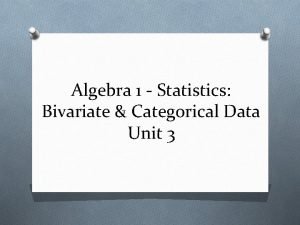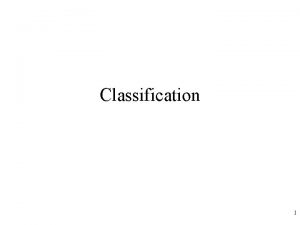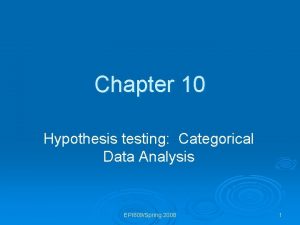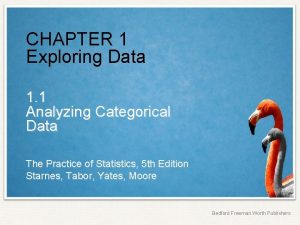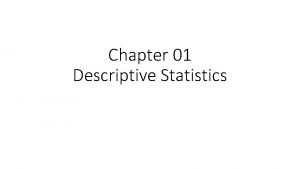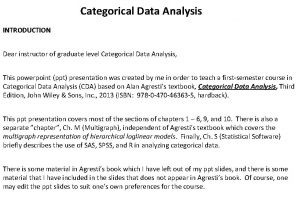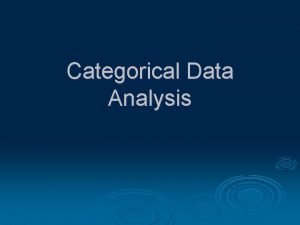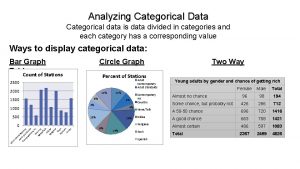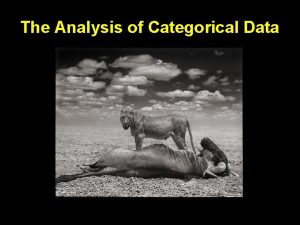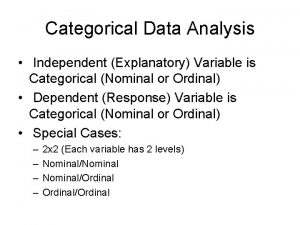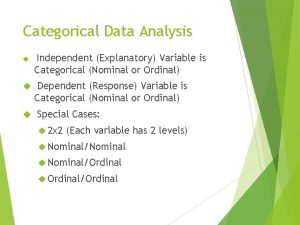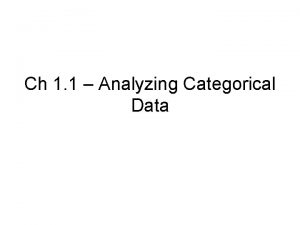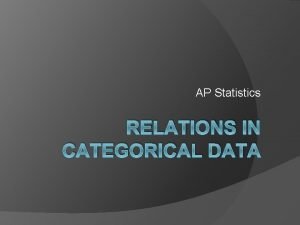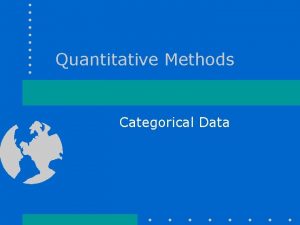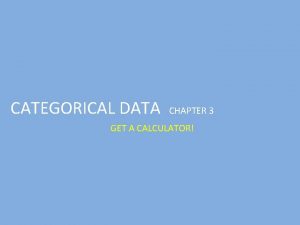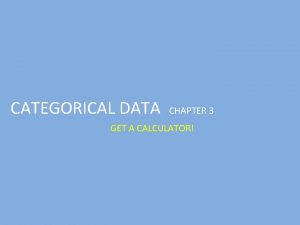Chapter 13 Categorical Data Analysis Categorical Data and












- Slides: 12

Chapter 13 Categorical Data Analysis

Categorical Data and the Multinomial Distribution Properties of the Multinomial Experiment 1. 2. 3. 4. 5. Experiment has n identical trials There are k possible outcomes to each trial, called classes, categories or cells Probabilities of the k outcomes remain constant from trial to trial Trials are independent Variables of interest are the cell counts, n 1, n 2…nk, the number of observations that fall into each of the k classes 2

Testing Category Probabilities: One -Way Table In a multinomial experiment with categorical data from a single qualitative variable, we summarize data in a one-way table. 3

Testing Category Probabilities: One -Way Table Hypothesis Testing for a One-Way Table • Based on the 2 statistic, which allows comparison between the observed distribution of counts and an expected distribution of counts across the k classes • Expected distribution = E(nk)=npk, where n is the total number of trials, and pk is the hypothesized probability of being in class k according to H 0 • The test statistic, 2, is calculated as and the rejection region is determined by the 2 distribution using k-1 df and the desired 4

Testing Category Probabilities: One -Way Table Hypothesis Testing for a One-Way Table • The null hypothesis is often formulated as a no difference, where H 0: p 1=p 2=p 3=…=pk=1/k, but can be formulated with non-equivalent probabilities • Alternate hypothesis states that Ha: at least one of the multinomial probabilities does not equal its hypothesized value 5

Testing Category Probabilities: One -Way Table Hypothesis Testing for a One-Way Table • The null hypothesis is often formulated as a no difference, where H 0: p 1=p 2=p 3=…=pk=1/k, but can be formulated with non-equivalent probabilities • Alternate hypothesis states that Ha: at least one of the multinomial probabilities does not equal its hypothesized value 6

Testing Category Probabilities: One -Way Table One-Way Tables: an example H 0: p. Legal=. 07, pdecrim=. 18, pexistlaw=. 65, pnone=. 10 Ha: At least 2 proportions differ from proposed plan Rejection region with =. 01, df = k-1 = 3 is 11. 3449 Since the test statistic falls in the rejection region, we reject H 0 7

Testing Category Probabilities: One -Way Table Conditions Required for a valid 2 Test • Multinomial experiment has been conducted • Sample size is large, with E(ni) at least 5 for every cell 8

Testing Category Probabilities: Two -Way (Contingency) Table Used when classifying with two qualitative variables H 0: The two classifications are independent Ha: The two classifications are dependent Test Statistic: Rejection region: 2> 2 , where 2 has (r-1)(c-1) df 9

Testing Category Probabilities: Two. Way (Contingency) Table Conditions Required for a valid 2 Test • N observed counts are a random sample from the population of interest • Sample size is large, with E(ni) at least 5 for every cell 10

Testing Category Probabilities: Two. Way (Contingency) Table Sample Statistical package output 11

A Word of Caution about Chi-Square Tests • When an expected cell count is less than 5, 2 probability distribution should not be used • If H 0 is not rejected, do not accept H 0 that the classifications are independent, due to the implications of a Type II error. • Do not infer causality when H 0 is rejected. Contingency table analysis determines statistical dependence only. 12
 Chapter 3 displaying and describing categorical data
Chapter 3 displaying and describing categorical data Genderx nurse
Genderx nurse Chapter 11 inference for distributions of categorical data
Chapter 11 inference for distributions of categorical data Chapter 11 inference for distributions of categorical data
Chapter 11 inference for distributions of categorical data Chapter 11 inference for distributions of categorical data
Chapter 11 inference for distributions of categorical data Categorical data vs numerical data
Categorical data vs numerical data What statistical test for categorical data
What statistical test for categorical data Bivariate categorical data
Bivariate categorical data Categorical data classification
Categorical data classification Categorical data hypothesis testing
Categorical data hypothesis testing Analyzing categorical data
Analyzing categorical data Categorical data examples
Categorical data examples What is conditional relative frequency
What is conditional relative frequency
